Wyoming’s North Pathway
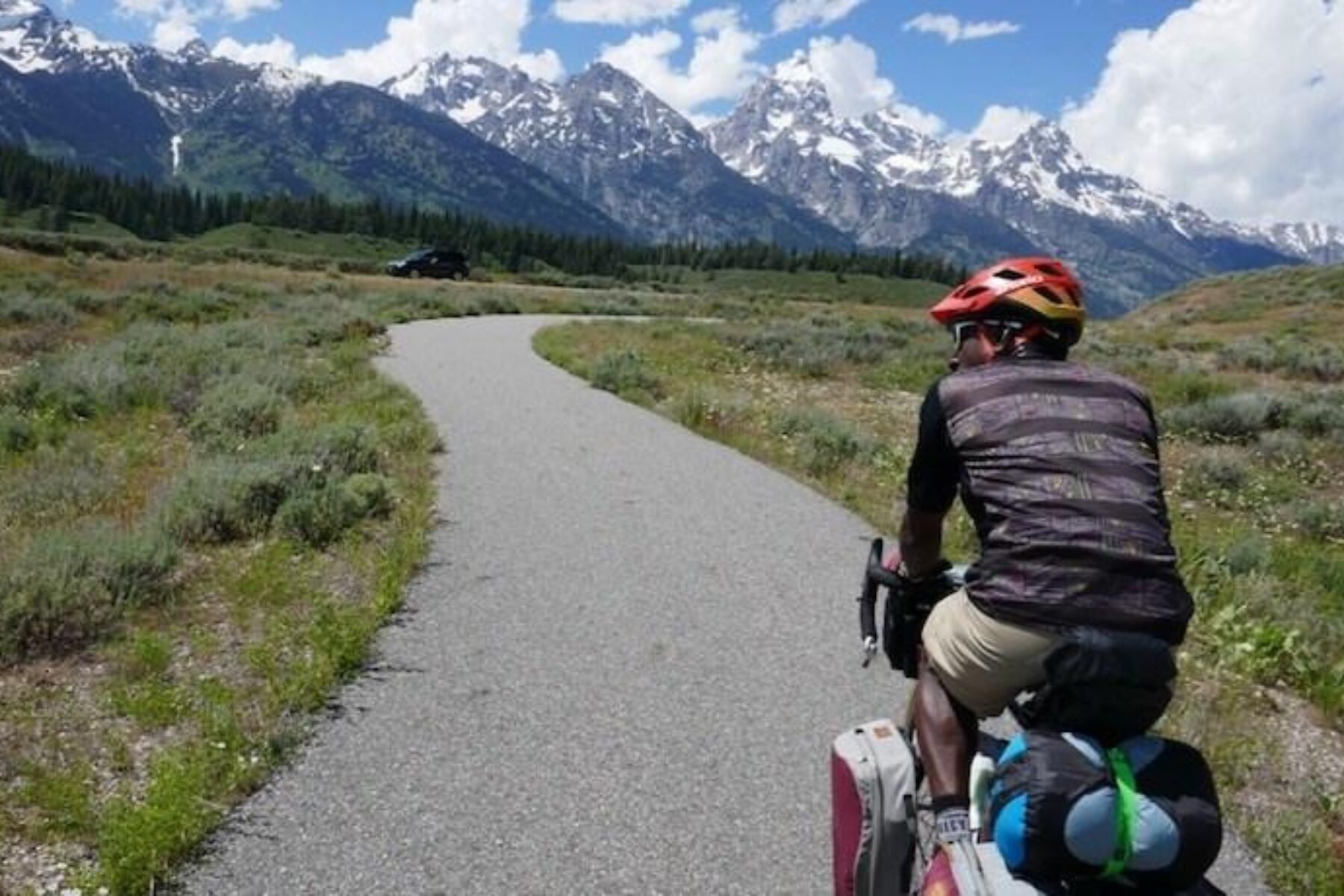
Trail of the Month: July 2018
“You see families out there with little kids having the time of their lives.”
—Brian Schilling, the pathways coordinator for the Town of Jackson and Teton County
Tucked into Wyoming’s scenic northwestern corner, the North Pathway is what summer vacations are made for. From the charming town of Jackson—the gateway to two national parks—the paved pathway unwinds 20 miles north through a backdrop of sagebrush meadows and the unparalleled beauty of the Grand Teton mountain range. And at trail’s end is a pristine glacial lake surrounded by high canyon walls etched with hiking trails to explore.
Pedaling through a National Elk Refuge and Grand Teton National Park, which draws nearly 5 million visitors a year, chances are good that travelers will see the majestic animals of the American West, including elk, moose, pronghorns, bison, eagles and even the occasional bear. With camping options in the park or other lodging available in town, there are enough activities to keep visitors busy for a couple of days or even a week.
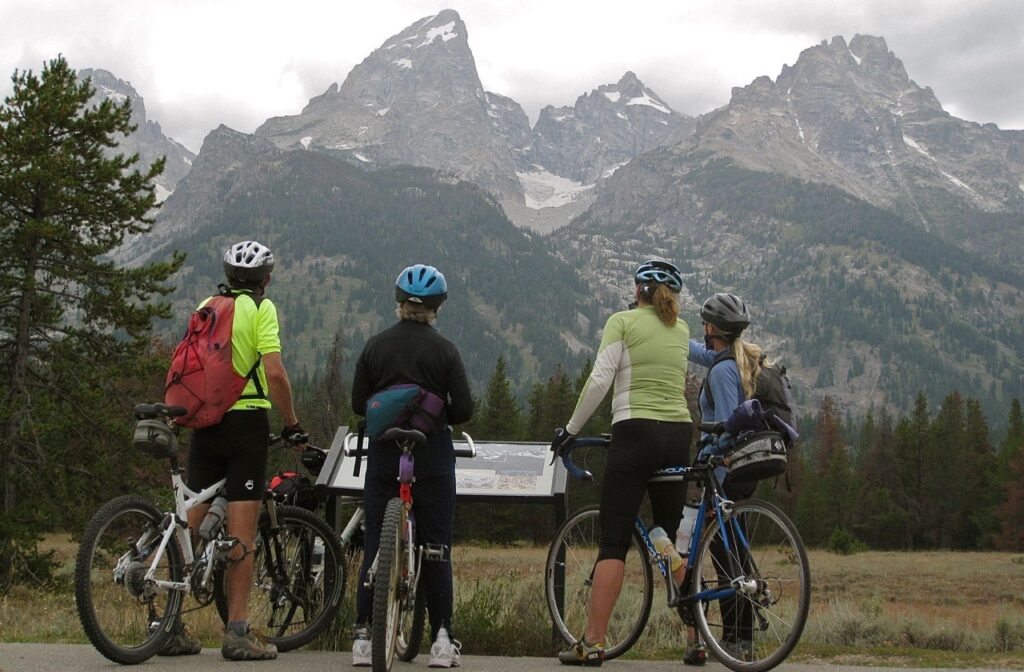
“It’s an awesome experience to be riding a bike along the iconic Grand Teton range and enjoying the wildlife viewing opportunities. You never know what you may see,” said Denise Germann, a public affairs officer for Grand Teton National Park who also rides the North Pathway a couple times a week. When asked what her favorite spots along the route are, she said, “It’s all spectacular.”
The smell of the sagebrush, the sound of elks bugling and the feel of a soft wind on your face. With so much to do outdoors, it may be hard to fathom a reason to go inside, but the National Museum of Wildlife Art makes a strong case. About 3 miles from the trail’s southern end, an art-bedecked tunnel provides safe passage under Highway 89, leading visitors on a worthwhile side excursion to the museum. More than 5,000 artworks are featured here, dating from 2500 B.C. to the modern day, including pieces by famed artists such as James Audubon, Georgia O’Keeffe and Andy Warhol.
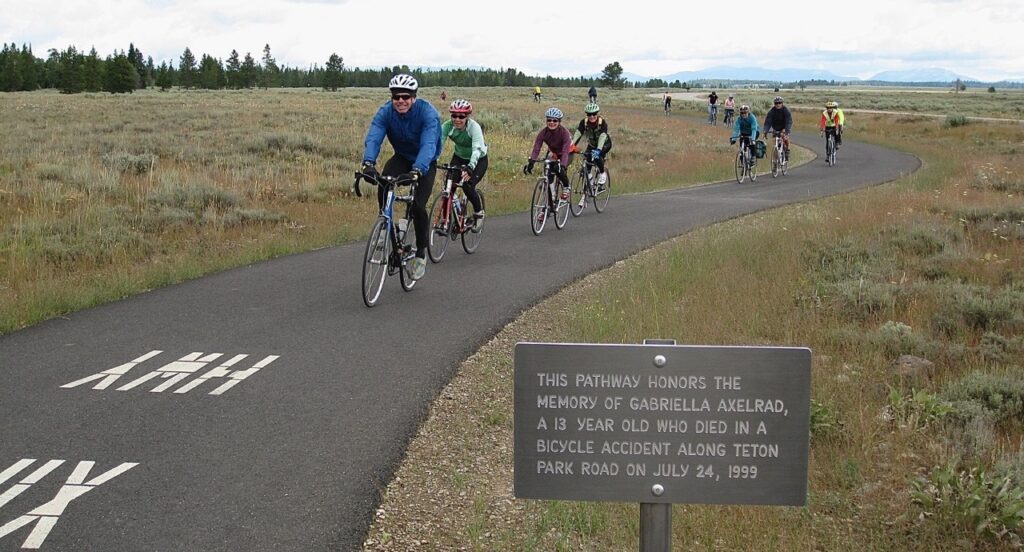
Paralleling Highway 89 and Teton Park Road, the pathway offers a safe and comfortable way for bicyclists and walkers to traverse the mountain valley of Jackson Hole. Unfortunately, it was a tragedy on the adjacent roadway that helped spur the pathway’s development. A 13-year-old girl, Gabriella Axelrad, was biking with her family in the park in 1999 when she was struck and killed by a car. Her family lent their voices to the need for a nonmotorized route through the park, and the community rallied behind them. The urgency became more apparent when another on-road biking death occurred in 2001.
Former U.S. Senator Craig Thomas, a Wyoming native who was born near Yellowstone National Park, took up the cause and secured federal funding for the creation of the pathway. The first section of the trail, from Moose to Jenny Lake, opened in 2009, and the remainder was finished in 2012. Today, a sign placed along the trail honors Gabriella’s memory. A park visitor center along the trail in Moose was also named after Sen. Thomas.
“In the park, drivers are distracted because they’re looking all around at the scenery,” said Katherine Dowson, executive director for Friends of Pathways, a nonprofit that’s spearheading the trail effort in Jackson Hole. “Having a separated pathway takes the edge off those who want to travel through it. The people we see on the trail are a little slice of America—they’re not the Tour de France types.”
Related: Five Rail-Trails in America’s National Parks
Although hiking trails are prevalent in the country’s National Park system, paved multiuse pathways are not, and trail advocates see the North Pathway as a success story that could be replicated in more parks around the country. There was some pushback on the idea initially, but the trail has grown into a well-used, well-loved amenity.
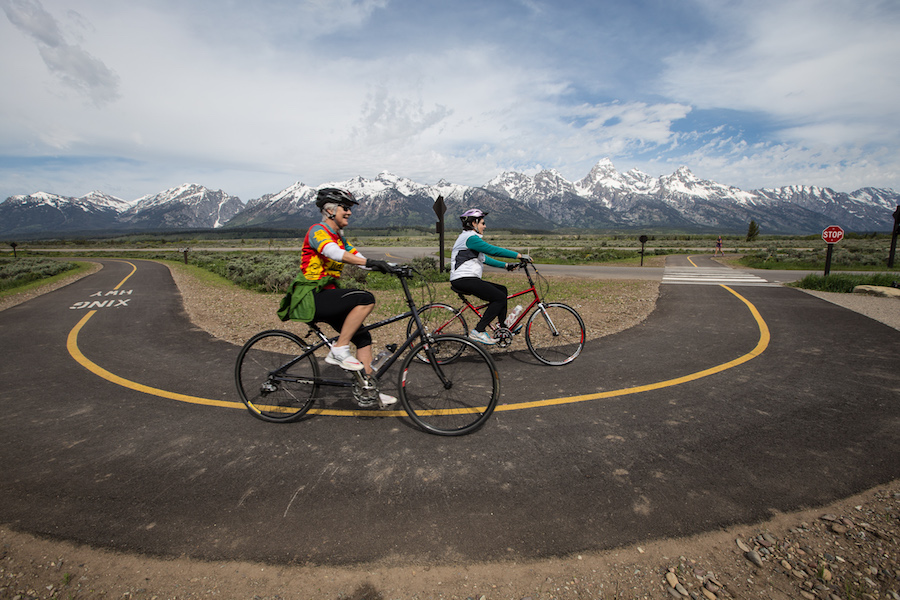
“Prior to the pathway going in, you might see two to three people every few hours biking on the road—and no pedestrians,” said Brian Schilling, the pathways coordinator for the Town of Jackson and Teton County. “Since the pathway opened, that’s increased 50-fold. You might see 100 trail users every couple hours, and it’s a dramatic increase in types of users. Some said the trail would just be for the Lycra-clad, but that’s not what we’ve seen. You see families out there with little kids having the time of their lives.”
Trails are having a moment in Jackson Hole with more than 50 miles of pathway on the ground throughout the region. In addition to the pathway to Grand Teton National Park, there are trails connecting Jackson with the nearby communities of Wilson and Teton Village, and heading south toward Hoback Junction. Jackson is now ranked as a gold-level bicycle-friendly community and boasts a new bike-share system that makes taking short trips around downtown easy and convenient.
“Back in the day, when the trail was just an idea, we only had one or two bike shops in the valley and they were struggling,” said Tim Young, executive director for Wyoming Pathways and a local resident for more than 40 years. “Now we have seven or eight bike shops, and they’re bustling. The pathways have provided travel and tourism opportunities. People like to ride their bikes and make it part of their vacation.”
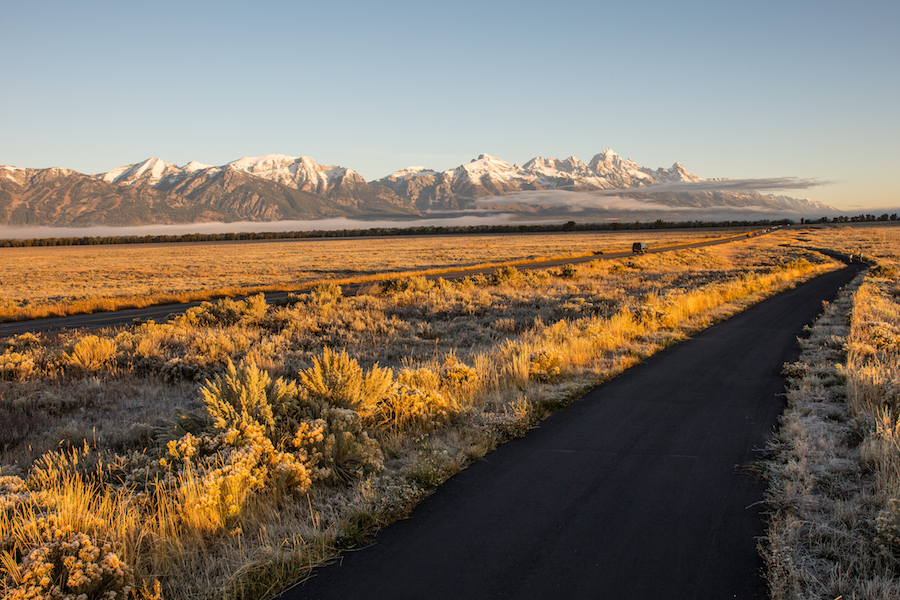
As incredible as the local trail system already is, hold onto your bike helmets because it gets even better. The North Pathway is part of a larger project called the Greater Yellowstone Trail, which aims to seamlessly connect 180 miles of trail (much of which follows old rail line) across three states—Wyoming, Idaho and Montana—from Grand Teton National Park to Yellowstone National Park, the nation’s first national park.
“The Greater Yellowstone Trail will be a spectacular amenity for the region,” said Schilling. “To go from Grand Teton National Park, around the Tetons, and up to Yellowstone National Park will be an amazing thing to do. And you’ll go through a dozen small communities along that trip. To do that on a safe, comfortable trail, that opens up the experience to a whole range of people.”
Related Links
Teton County
Wyoming Pathways
Friends of Pathways
Grand Teton National Park
National Elk Refuge
Trail Facts
Name: North Pathway
Trail website: Teton County
Length: 20.3 miles
County: Teton County
Start point/end point: Mercill Avenue and US 89 (Jackson) and Jenny Lake Visitor Center (Grand Teton National Park)
Surface type: Asphalt
Grade: The “hole” in the region’s Jackson Hole name comes from its location in a river valley surrounded by mountains. As the trail is nestled in this valley, it’s relatively flat, never exceeding a grade of 5 percent. There is a gradual hill in the trail just over 3 miles north of its southern end at the Jackson National Fish Hatchery.
Uses: Walking, bicycling, inline skating and fishing; wheelchair accessible. (In winter, the trail is unavailable as the area typically gets heavy snowfall and the trail is not plowed or groomed.)
Seasonal closure: The 6-mile portion of the trail through the National Wildlife Refuge—from Jackson to Gros Ventre River—closes seasonally between Nov. 1 and April 30 to minimize conflicts between trail users and migrating elk.
Difficulty: The trail is easy and paved. In warm weather, be sure to wear sunscreen and bring water, as there is no tree cover.
Getting there: The Jackson Hole Airport (1250 E. Airport Road, Jackson) is the only commercial airport in the country located within a National Park. It’s situated about a half-mile west of the North Pathway.
There is an entrance fee (valid for seven days) for Grand Teton National Park, though it is less for those coming by foot or on a bicycle than by car ($20 vs. $35).
Access and parking: Three visitor centers along the trail provide parking, restrooms and drinking water (from south to north):
- Jackson Hole and Greater Yellowstone Visitor Center (532 N. Cache St., Jackson)
- Craig Thomas Discovery and Visitor Center (1 Teton Park Road, Moose)
- Jenny Lake Visitor Center (Grand Teton National Park)
To navigate the area with an interactive GIS map, and to see more photos, user reviews and ratings, plus loads of other trip-planning information, visit TrailLink.com, RTC’s free trail-finder website.
Rentals: Near the south end of the trail, Hoff’s Bikesmith (265 W. Broadway; 307.203.0444) and Hoback Sports (520 W. Broadway Ave. #3; 307.733.5335) offer bike rentals in Jackson. Closer to the northern end of the trail, Dornans Adventure Sports (307.733.2415) offers bike rentals within Grand Teton National Park in Moose.

Donate
Everyone deserves access to safe ways to walk, bike, and be active outdoors.



